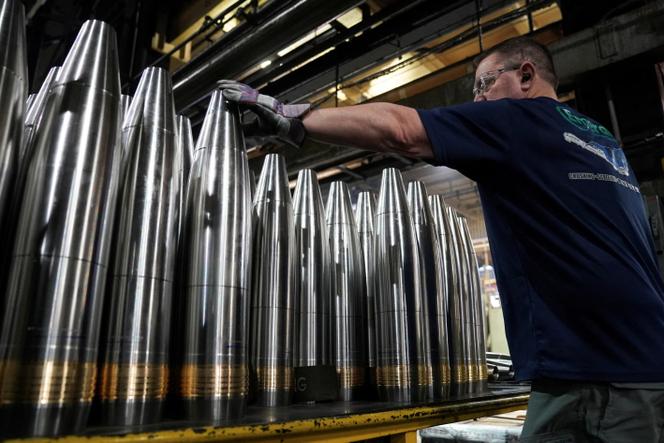


Across the globe, few regions remain untouched by open warfare, frozen conflicts, or escalating tensions. This volatile landscape has propelled arms production to levels unseen since the Cold War. In 2023, sales by the world’s top 100 defense companies rose 4.2% in real terms, reaching $632 billion (approximately €600 billion), according to a report released Monday, December 2, by the Stockholm International Peace Research Institute (SIPRI). A significant portion of this total, though difficult to quantify, was linked to the modernization of nuclear arsenals. With a 19% increase in arms sales since 2015, the upward trend shows no signs of slowing.
Forty-one US-based companies alone accounted for half of the activity ($317 billion). Five of them top the list with a total of $194 billion: Lockheed Martin, RTX, Northrop Grumman, Boeing, and General Dynamics. Nevertheless, their dependence on a large number of suppliers makes them "vulnerable" to supply chain disruptions, said Nan Tian, Director of SIPRI's Military Spending and Arms Production Program – which explains the slight decline in activity for the first two groups (-1.6% and -1.3%), particularly in the missile and aerospace segments.
The 27 European groups surveyed posted sales of $133 billion, representing a virtual stagnation of +0.2%. With two heavyweights: the UK ($47.7 billion), led by BAE Systems, the world's sixth-largest producer; and France ($25.5 billion) with its five companies (Commissariat à l'Energie Atomique, Dassault Aviation, Naval Group, Safran, Thales). The French company's 8.5% decline compared to 2022 is due to the fact that that year was boosted by an order for 92 Rafale fighters. Next in line are Italy ($15.2 bn) and Germany ($10.5 bn), which is in the midst of a revival thanks to canons, Leopard 2 tanks, and ammunition from Rheinmetall. As for the "trans-Europeans" Airbus, MBDA (missile makers), and KNDS (guns, armored vehicles), they produced equipment worth $21 billion (- 1.5%).
These European countries are not in a "war economy," like Russia. Although statistics are patchy and unreliable, modernization of the old arsenal, new equipment, and ammunition, plus soldiers' pay, absorb 40% of the Russian budget. The activity of the two companies listed by SIPRI has exploded (+40%), mainly due to the state-owned conglomerate Rostec (+39%), reaching $25.5 billion.
In the Asia-Pacific region, the Chinese threat is the driving force behind rearmament, and activity is as buoyant there as in Europe. China marked time with sales of $103 billion (+0.7%), achieved in part by three companies in the world's top 10, putting the People's Republic in second place among producing countries. The country is far ahead of India, whose three main groups total just $6.7 billion. The production boom was driven by South Korea (+35%), which enjoyed considerable export success, and Japan (+35%), whose "self-defense forces" remain confined to the archipelago.
You have 42.03% of this article left to read. The rest is for subscribers only.
